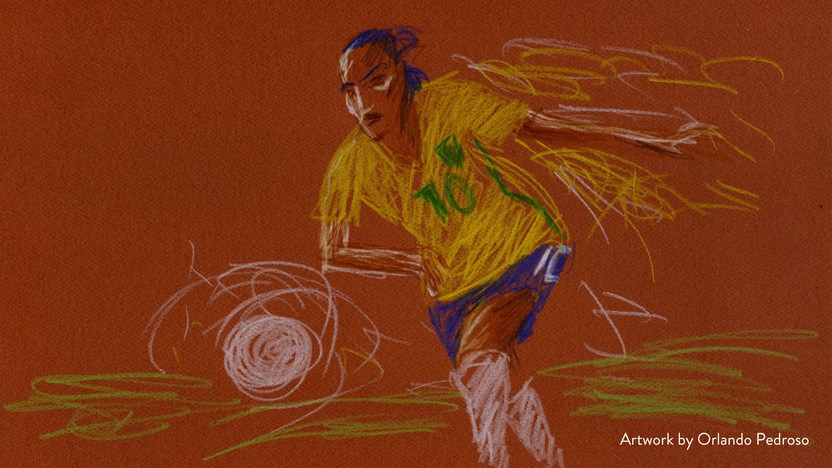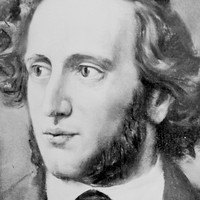Family Concert: É Gol!



After leaving stormy Scotland, which inspired the Hebrides Overture and the Symphony No. 3 (“Scottish”), the 20-year-old Felix Mendelssohn continued his grand tour in Italy, sparking a symphony that, according to the composer, was “the jolliest piece I have ever done.”
Mendelssohn sketched part of that symphony while in Italy in 1830–31, and he completed the work in 1833, using it to fulfill a prestigious commission from the Philharmonic Society of London, the same group that had commissioned Ludwig van Beethoven’s Ninth Symphony. Mendelssohn made substantial revisions to the symphony’s final three movements in 1834, and he intended to revise the first movement, too, but he postponed that task and finally suppressed the symphony altogether. The work was published posthumously as the Symphony No. 4, although it was actually composed third. This performance restores the original conception of the 1833 version, using a critical edition prepared by the conductor Christopher Hogwood.
Mendelssohn’s bright impressions of Italy are borne out by the bouncing themes and running triplet pulse of the Allegro vivace movement that opens the symphony. Still, this is no mere musical “postcard” — just note the finely wrought development section, which shows the work of a composer equally fluent in Johann Sebastian Bach’s formal counterpoint and Beethoven’s obsessive manipulation of recurring themes. The Andante con moto may have been influenced by a religious processional Mendelssohn witnessed in Naples, an image that fits with the movement’s walking bass and grave harmonies.
The moderate pace and smooth flow of third movement resemble the symphonic minuets of Wolfgang Amadeus Mozart and Franz Joseph Haydn, as opposed to the more rambunctious scherzos popularized by Beethoven. In the contrasting trio section, the horns and bassoons indulge in spacious phrases that impart an outdoor quality, until the mood turns momentarily menacing with the interjection of trumpets, timpani, and a stern minor key.
For the symphony’s whirlwind finale, Mendelssohn borrowed lively rhythmic patterns from Italian folk dancing. He named the movement after the saltarello, a dance from central Italy defined by its fast triplet pulse and its leaping movements.
Aaron Grad ©2023

É Gol! is inspired by female Brazilian soccer player Marta Vieira da Silva, who is often regarded as the best female footballer of all time. The piece is scored for the full orchestra and audience members who are not passive listeners but are part of the score as active participants. Audience members will be led in and out of sections by performing sound effects, singing, performing simple body percussion movements, and other exciting textures that either match or contrast with the music played by the orchestra. The audience part, partly written and partly improvised, will be led by composer Clarice Assad. The work explores moments of Vieira da Silva’s life, culminating with a soccer match soundtrack finale.
Clarice Assad ©2023

After leaving stormy Scotland, which inspired the Hebrides Overture and the Symphony No. 3 (“Scottish”), the 20-year-old Felix Mendelssohn continued his grand tour in Italy, sparking a symphony that, according to the composer, was “the jolliest piece I have ever done.”
Mendelssohn sketched part of that symphony while in Italy in 1830–31, and he completed the work in 1833, using it to fulfill a prestigious commission from the Philharmonic Society of London, the same group that had commissioned Ludwig van Beethoven’s Ninth Symphony. Mendelssohn made substantial revisions to the symphony’s final three movements in 1834, and he intended to revise the first movement, too, but he postponed that task and finally suppressed the symphony altogether. The work was published posthumously as the Symphony No. 4, although it was actually composed third. This performance restores the original conception of the 1833 version, using a critical edition prepared by the conductor Christopher Hogwood.
Mendelssohn’s bright impressions of Italy are borne out by the bouncing themes and running triplet pulse of the Allegro vivace movement that opens the symphony. Still, this is no mere musical “postcard” — just note the finely wrought development section, which shows the work of a composer equally fluent in Johann Sebastian Bach’s formal counterpoint and Beethoven’s obsessive manipulation of recurring themes. The Andante con moto may have been influenced by a religious processional Mendelssohn witnessed in Naples, an image that fits with the movement’s walking bass and grave harmonies.
The moderate pace and smooth flow of third movement resemble the symphonic minuets of Wolfgang Amadeus Mozart and Franz Joseph Haydn, as opposed to the more rambunctious scherzos popularized by Beethoven. In the contrasting trio section, the horns and bassoons indulge in spacious phrases that impart an outdoor quality, until the mood turns momentarily menacing with the interjection of trumpets, timpani, and a stern minor key.
For the symphony’s whirlwind finale, Mendelssohn borrowed lively rhythmic patterns from Italian folk dancing. He named the movement after the saltarello, a dance from central Italy defined by its fast triplet pulse and its leaping movements.
Aaron Grad ©2023
The Saint Paul Chamber Orchestra collaborates with MN Aurora to present this Family Concert. Minnesota Aurora is a women-led, community-owned soccer team in the Twin Cities.
For additional activities, visit Engagement Resources for Children, Families and Educators page.
Get driving directions and find nearby parking.
Find dining options close to the venue.
View seating charts to find out where you'll be seating.
SPCO concerts are made possible by audience contributions.
For exclusive discounts, behind-the-scenes info, and more:
Sign up for our email club!
